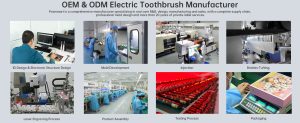Understanding the Complexities of Pricing Electric Toothbrushes
The market for electric toothbrushes has grown substantially over the last decade, driven by innovations in technology and increasing consumer awareness of dental hygiene. However, while the demand for these products is rising, manufacturers face the tricky challenge of setting a price that not only reflects the true value of the product but also aligns with market expectations. Developing a pricing strategy electric toothbrushes requires balancing multiple factors, such as manufacturing cost and market positioning. In this blog, we will explore the key considerations that go into pricing these essential consumer products.
The Impact of Manufacturing Cost on Pricing Decisions
The manufacturing cost is one of the most significant factors affecting the pricing of any product, and electric toothbrushes are no exception. From the development of the brush heads to the integration of smart technology features (such as pressure sensors or Bluetooth connectivity), every component of the toothbrush affects production costs.
As manufacturers, it is crucial to assess the cost of raw materials—plastic, metals, and electronic components—as well as labor and operational costs to determine a baseline price. Any decision regarding pricing strategy for electric toothbrushes must account for these foundational costs to ensure profitability while avoiding underpricing the product, which could lead to a loss.

Market Positioning: Defining Your Product’s Place in the Consumer Landscape
Once you have established the cost of production, the next step is to define the market positioning of your electric toothbrush. Is it a high-end model with cutting-edge features, or a budget-friendly version targeting mass-market consumers? Your product’s position in the market will heavily influence your pricing approach.
Premium brands like Philips Sonicare or Oral-B may price their electric toothbrushes higher due to advanced features, superior design, and strong brand recognition. On the other hand, a budget-friendly product may focus on providing essential features at a more affordable price, often appealing to a wider audience.
Thus, market positioning not only helps determine your target demographic but also serves as a guide for setting prices in line with consumer expectations for quality, performance, and overall value.
Competitor Pricing: Navigating Market Trends and Consumer Expectations
In a competitive landscape, the pricing of electric toothbrushes can often be influenced by what competitors are charging. Brands within the same tier will tend to adjust their prices based on competitor activity to ensure they remain relevant and attractive to consumers.
When formulating your pricing strategy for electric toothbrushes, it’s essential to keep a close eye on competitor pricing models. For instance, a premium brand may charge a premium for additional features, while mid-tier competitors might focus on balancing price with performance. However, it’s crucial to remember that competitor pricing is just one part of the equation. You must weigh it alongside manufacturing costs and market positioning to avoid being either too expensive or too cheap compared to the perceived value of your product.
Consumer Perception and Value Proposition
One of the most important factors that influence the pricing of electric toothbrushes is consumer perception. Consumers are often willing to pay more if they perceive that the product offers better quality, durability, and results. This is where the balance between manufacturing cost and market positioning becomes critical.
If you are offering a toothbrush with unique features, such as personalized brushing modes, UV sanitization, or superior battery life, consumers may view these enhancements as added value. As such, they may be more inclined to accept a higher price point. Your task as a manufacturer is to ensure that the perceived value matches the pricing and justifies the product’s position within the market.
Strategic Pricing Models: Cost-Plus vs. Value-Based
When deciding how to approach pricing strategy for electric toothbrushes, there are two primary models to consider: cost-plus pricing and value-based pricing.
Cost-plus pricing involves determining the total manufacturing cost and then adding a markup to generate a profit margin. This is straightforward but may not fully reflect consumer demand or market trends.
Value-based pricing, on the other hand, focuses on what consumers are willing to pay based on the perceived value of the product. This can lead to higher margins if the product is positioned as a premium offering, but it requires a deeper understanding of consumer behavior and willingness to pay.
Both strategies come with their own advantages and challenges, but the key lies in balancing manufacturing costs with the value you deliver to consumers in relation to market expectations.
Long-Term Sustainability: Adjusting Pricing Over Time
Finally, as market conditions change and production methods evolve, manufacturers must be prepared to adjust their pricing strategy. A successful pricing strategy for electric toothbrushes is not static but dynamic, requiring ongoing analysis and refinement. Factors like economies of scale, new technologies, and shifts in consumer demand can all influence your price over time.
Additionally, manufacturers should be mindful of external factors such as inflation, fluctuations in material costs, and changes in labor expenses. As production becomes more efficient and manufacturing costs decrease, manufacturers may find opportunities to lower prices or offer promotional discounts to remain competitive.
The Delicate Balance
Pricing an electric toothbrush is more than just covering production costs and adding a margin—it’s a delicate balancing act between cost, consumer demand, and brand positioning. Manufacturers need to continuously evaluate their pricing strategy for electric toothbrushes, ensuring it aligns with both manufacturing cost and market positioning. By doing so, you can set a price that maximizes both profitability and customer satisfaction, all while maintaining a competitive edge in the growing electric toothbrush market.





